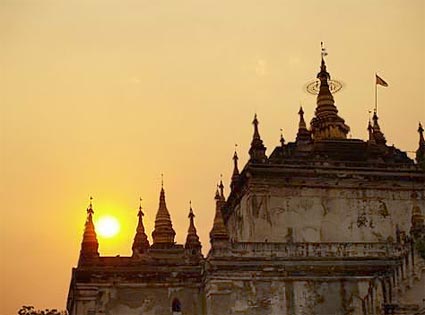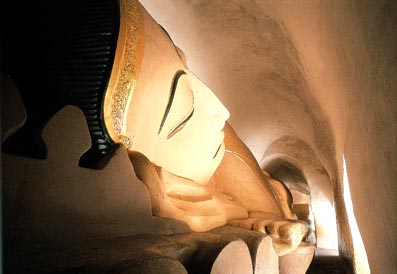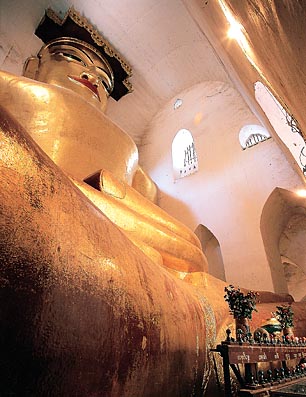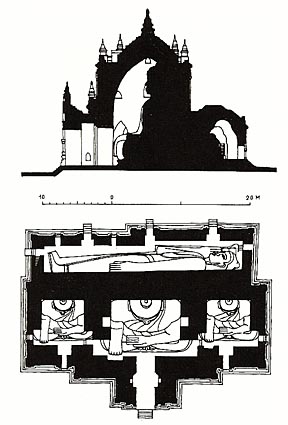A bigger structure is the Manuha Temple |
There was therefore no need for a layout where lots of people could pray, it is here and in the Shinbinthalyaung Temple where almost the entire interior function as a shelter.
The Shinbinthalyaung was built in the 11th Century
Located within the temple complex Shwezandaw and the other is this one. The buildings and the statues were built of brick, stucco plastered and painted with color. Technology has coined the character of these sculptures which have a rather coarse look, less-structured and less expressive form. |
| Manuha Temple |
The nameless master who built this monument has understood to make it even with the simplest of means to show the grandeur and importance of the image of the deity to bear. The tightness of the area underlines the size of the Buddha and the nullity of the people standing in front.
 |
| The reclining Buddha |
At the same aesthetic principles the temple itself is constructed.
It carries the name of its legendary builder, a captured Mon-King. It contains four Buddha statues - three seated, with the central one reaches a height of 14 meters, and a reclining which is 27 meters long. Contrary to the canon, which requires having his head turned facing south, the head of this statue faces north which confirms once again that the locals didn’t take the canonical rules extremely serious, actually this is the source of creativity. |
| Manuha Temple Buddha |
 |
| Manuha Temple Cross Section |
Comments
Post a Comment